All aboard!
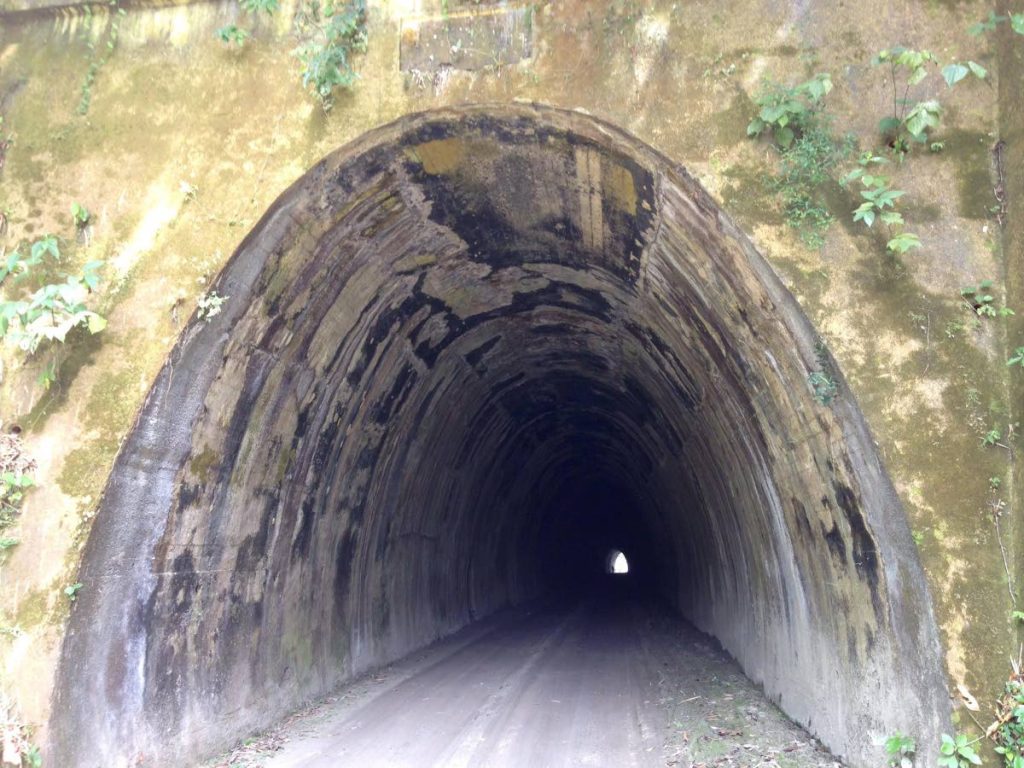
LISA ALLEN-AGOSTINI
THE National Trust’s Trinidad Government Railway (TGR) tour to Rio Claro via the Caparo Valley Line started at 7.30 am on March 28 at Ft San Andres National Museum on South Quay, Port of Spain. The first stop: the locomotive engine parked in the museum yard. Guide Glen Beadon, a TT native who now lives in Worcestershire, is a railway enthusiast who has been collecting TGR ephemera for three decades and plans to write a book on the subject.
Engine D was the last engine to leave the Hunslet Works in Leeds before the outbreak of World War One (WWI), Beadon said, and Trinidad also got the last engine to leave the factory before the outbreak of World War Two (WWII). The tour was full of such minutiae of a world that ended when the TGR passenger service closed on December 28, 1968.
Moving to the Public Transportation Service Corp (PTSC) City Gate compound just across the street, Beadon pointed out vestiges of writing stamped on massive steel girders where the buses now pull up for passengers to board: this was Platform No Two, and this, No Three.
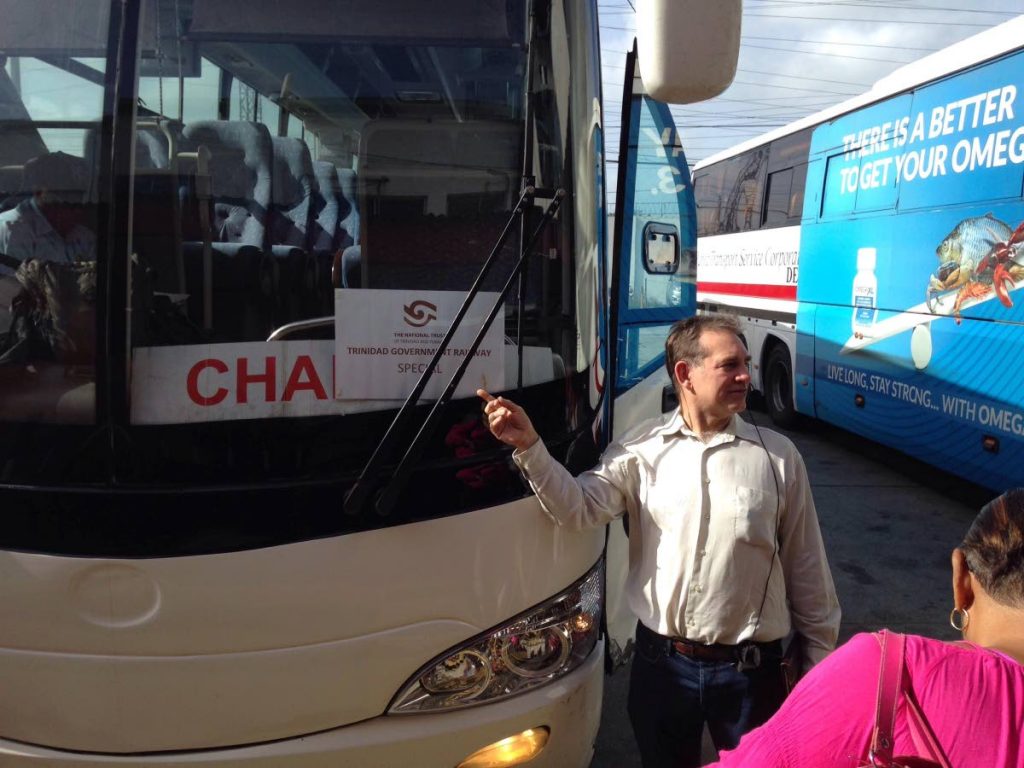
After crossing the original overhead footbridge to reach the tour bus, he noticed the sign proclaiming the PTSC coach “Trinidad Government Railway Special,” and Beadon beamed. A “special” was any unscheduled train, and there were often specials chartered for excursions and pilgrimages. “That warms my heart,” he said. Meanwhile, fellow enthusiast and member of the tour Ruthven Bunting reminded the tourists that there was to be no singing of hymns, playing of instruments or preaching until the special had passed the Dry River, as had been the custom on the TGR.
The Priority Bus Route was built over the railway track bed. This special followed it before swinging on to the Southern Main Road, with Beadon pointing out the extant railway signal post at Morvant Junction, the platform at St Joseph, and Peter’s Bar, a railway landmark at Curepe Junction.
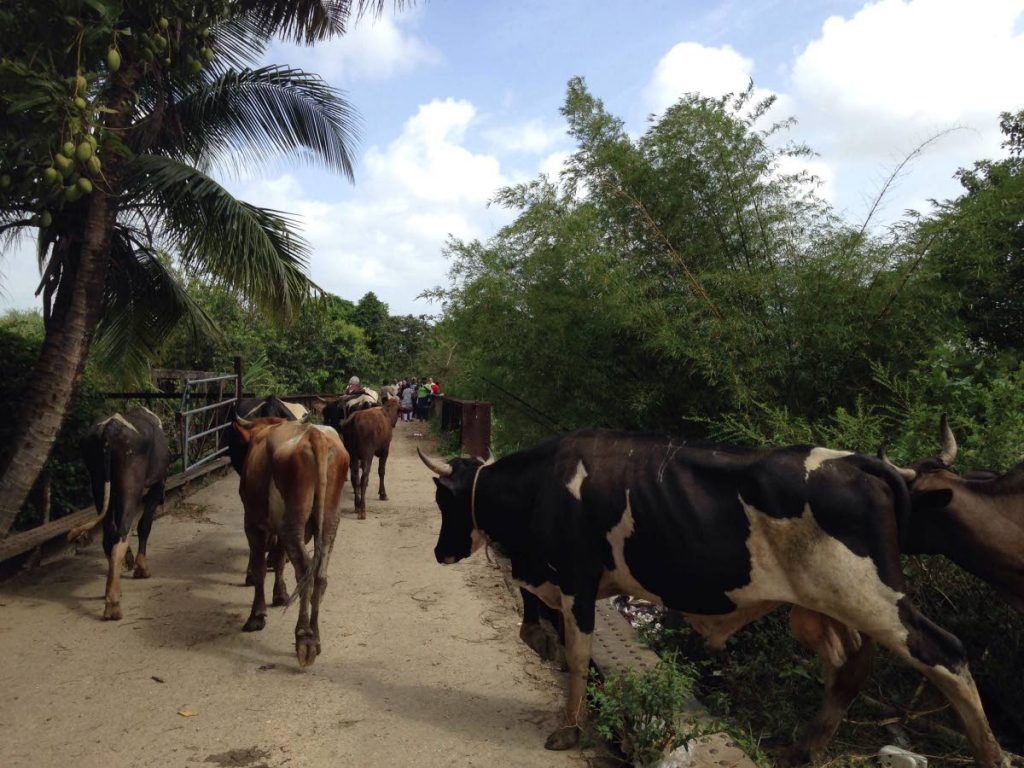
Next stop was Caroni Station, where a trestle bridge from the railway still stands. When the tour bus passengers disembarked to cross the riveted steel bridge, a herd of dairy cattle emerged from nearby bush. Their driver had to give them a signal to proceed as the curious tourists huddled at the end of the bridge, waiting for them to pass.
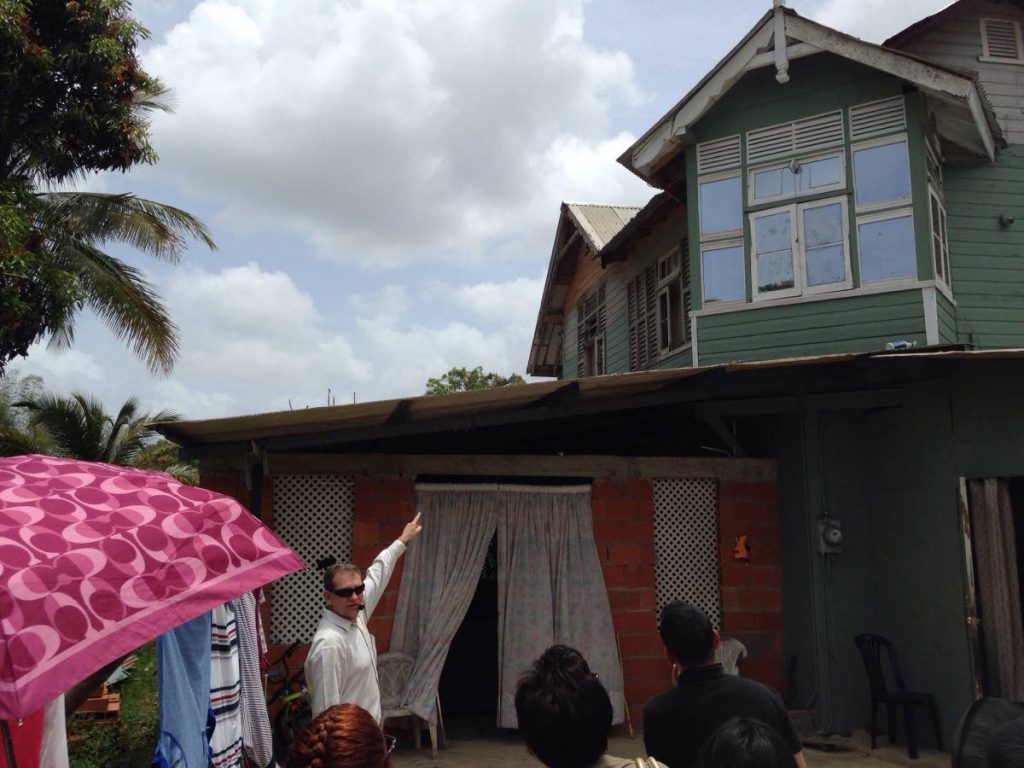
Those on the tour got to know the TGR colours well, as Beadon frequently indicated the vestiges of cream and brown paint on old TGR cottages that still stand, many home to descendants of stationmasters, platelayers, porters and other railway workers. The Caroni platelayer’s cottage was one. The platelayer’s daughter had a reunion with the stationmaster’s daughter, who had been born in a TGR cottage nearby and who was on the tour that day. Platelayers kept the track in good repair, Beadon said. It was the head ganger’s job to walk the tracks and ensure the rails were safe; they’d do that before the start of every day and report back by telegraph to Port of Spain or the signal box ahead.
From there the next stop was Todd's Road, where Beadon took his charges to the platform – a solid concrete ridge with sloping ends – where passengers would wait to alight their carriages. It’s still there at Sewa Trace. “The railway was built well, you know,” Beadon observed.
On the other side of the road, at Lyn’s Avenue, bits of track stuck up between pigeon peas planted over a concrete drain that was once part of the railway network. A 100 metres ahead was another bridge, one Beadon had never seen before. He asked a neighbour if they had lived there in the days of the railway; they hadn’t, but in recent memory they had chased away metal scavengers who had come by night to take the thick steel of the bridge with oxyacetylene torches.
Steel prices skyrocketed during the 1990s, Beadon said, and any metal lying around was fair game to scavengers. The only remaining signal box in Trinidad is at Stanleyville, near Usine Ste Madeline. It’s the neighbourhood people who have preserved what railway relics still remain, Beadon noted.
“How great would it be to have a museum with all this stuff? People don’t believe that we had these things in Trinidad. If we could get a society of people who could get together and save some of the past,” Beadon said wistfully over his mic on the bus as it drove along. “If we could get that signal from Morvant…it could start small.”
The Caparo Valley Line opened in 1898, as part of the extension of the railway into Central Trinidad for the “opening up and cultivation of some of the best lands in the country,” Beadon said, quoting from a historical document.
“Tabaquite and Rio Claro was real bush. Just imagine going through tropical forest with trees and vines that had never been touched.” The railway construction material was transported by mule and donkey cart because there were no roads, only cart tracks. Between the bush, the rain and the malaria endemic to the area then, “How horrific it must have been” for the workers, Beadon said.
The bus trundled through miles of undulating hills with towering immortelle trees crowned in flaming orange flowers shading cocoa and citrus to reach Knollys Tunnel in Tabaquite. Begun in 1896 and opened in 1898 by Acting Governor Sir Clement Courtenay Knollys, the tunnel was the first man-made one in the island and the most serious engineering project of the TGR, Beadon said.
Six-hundred-feet-long and cut through a low hill, Knollys Tunnel is just tall and wide enough to let a PTSC luxury coach pass. “For me this is an absolute privilege to come through the tunnel like this,” Beadon said.
The tunnel today is home to a colony of bats.
“Me, walk through that?” murmured one woman on the bus to her son, who had picked up his camera in preparation for doing just that. The bats rested once the bus was out of their home, allowing walkers to pass unmolested to the other end, where the tunnel’s original concrete face was still visible.
After a lunch of roti eaten under carat-thatched sheds in the picnic area atop the tunnel, it was on to Rio Claro, the terminus of the Caparo Valley Line. Where Rio Claro station stood is still government land, and there were PTSC buses lined up just beyond the platform, now home to a small steelband. A little further along Old Railway Road were more TGR more TGR cabins and the old engine shed, its buttresses flanked and obscured by newer buildings. The Rio Claro terminus opened in 1914, Beadon said. It was the last passenger extension to the TGR. By 1953 the passenger railway began to be phased out, and was shut down completely in 1968.
One of those on the tour, Beatrice Beddoe-McShine, lamented as she stood by the Todd’s Road platform, “What are we going to do now? Put up plaques saying, ‘Do not destroy’? Our heritage is lost. He has given us all this history, but what do we do now?”
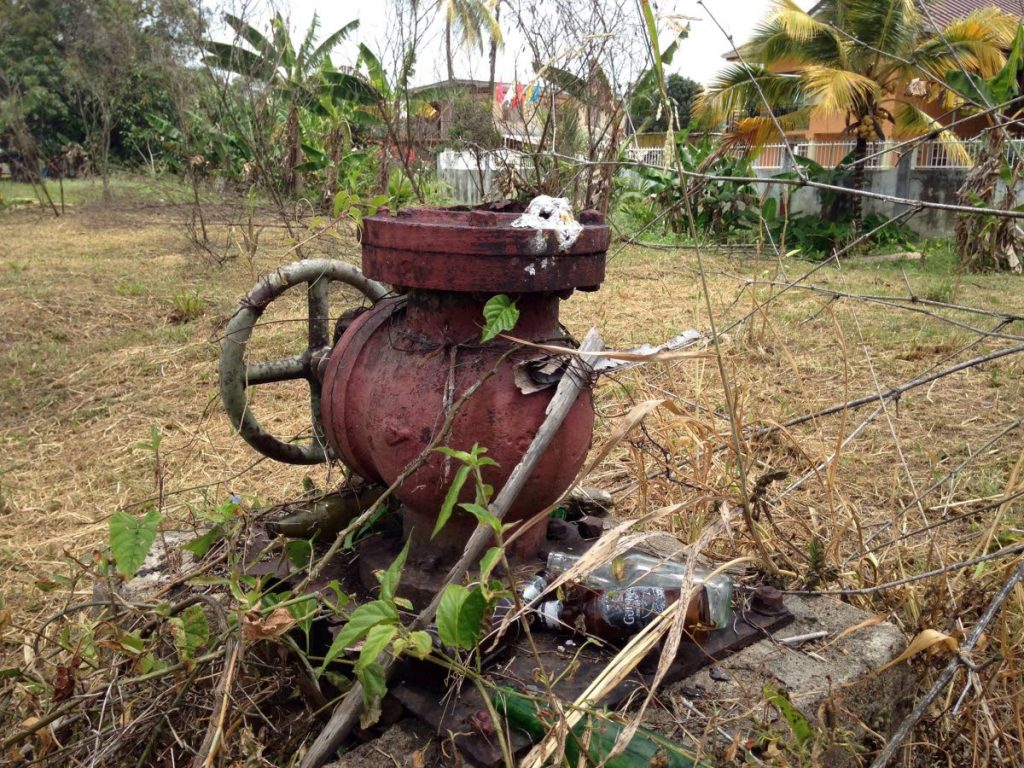
At Caparo there stands the island’s only complete water crane, a large faucet used to fill the engine tanks at the station. It’s just beyond the platform, now behind a bus shed. The steps to the shed are the original station steps, Beadon said. Overhead is the original water tank, too, made by Aitken McNeil and Co in Glasgow at the turn of the 20th century. The whole waterworks arrangement is still there, rusted through in many spots. Beddoe-McShine pondered aloud how the station’s restoration could become a project for schools in the area.
The National Trust conducts historical tours to various parts of the country. Its next tour is to the Western Isles on April 13.
For more info: http://nationaltrust.tt


Comments
"All aboard!"